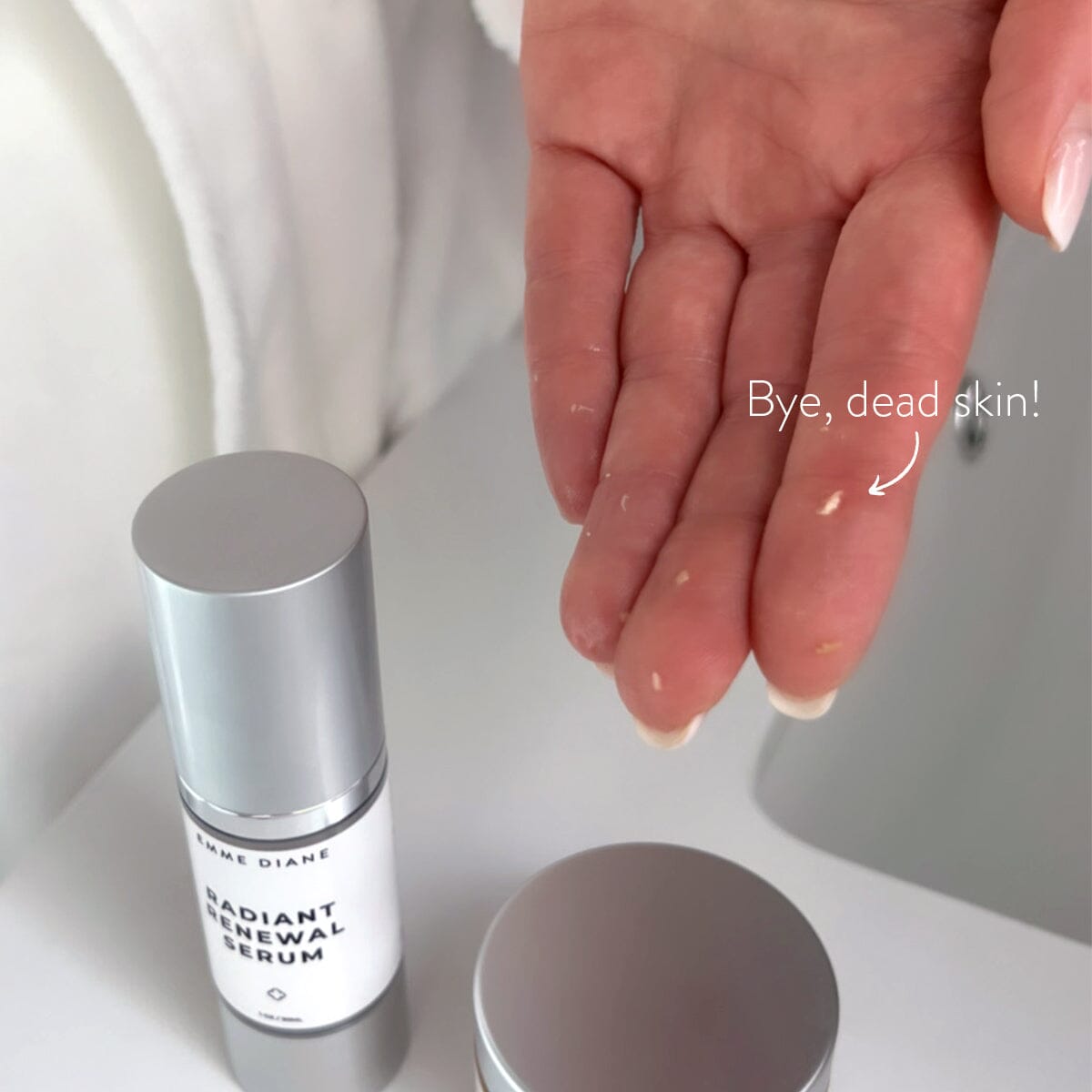You're Likely Experiencing Transepidermal Water Loss. Here's How to Stop It.
by Emily Linehan on June 19, 2022
Transepidermal Water Loss, or TEWL, is a process that occurs when water passes from the dermis (the middle layer of the skin) through the epidermis (the outermost layer of skin) then evaporates. To put it simply, TEWL causes the skin to lose vital water and moisture, which can cause a variety of issues such as dry or dull skin, redness, itchiness, or tightness.
Triggers of TEWL
Although TEWL is a natural process, it can lead to a damaged skin barrier, so avoiding triggers that exacerbate it are important. Some common triggers to consider include:
- Dry or desert climates, spending a lot of time with dry air indoors, or traveling on an airplane, can play a big factor in causing water dry skin.
- Sunburns or any sort of trauma to the skin.
- Hanging out in sweaty skin after a workout - this is because the salts from the sweat rapidly draw out moisture from the skin.
- A skincare routine where the products dry out the skin too quickly or the skin does not have enough time to acclimate to them.
- Inconsistency with your skincare routine (skipping days or nights).
- Not drinking enough water.
How to Stop TEWL
The key to a healthy, glowing complexion is to protect your moisture barrier. This means being careful to avoid any moisture barrier damaging factors, and incorporating additional products to help your skin retain moisture. Here are a few tips:
Use Humectants
The best way to combat dry, dehydrated skin caused by TEWL is by using products that contain humectants, such as sodium hyaluronate (a.k.a. hyaluronic acid) which is like a big drink of water for the skin. Our Skin Quencher Gel is an aloe based gel with other moisture loving humectants to quench dehydrated skin. It also contains Glycerin, which not only attracts moisture like a magnet, but also supports cell regeneration leading to softer, healthier skin.
Dew Drops Hydrating Serum is another great option. Similar to our Skin Quencher Gel, it contains Glycerin and Hyaluronic Acid. In addition, it also contains Sorbitol, which helps to retain moisture in the skin as well as acts as a prebiotic to maintain and protect the skin’s healthy microbiome.
If you aren’t sure which humectant is right for you, start with my free online skincare consultation, or if you’re an existing client be sure to check-in with me.
Lock in Moisture
After applying your humectant, be sure to apply an emollient, such as a cream or lotion, to seal in moisture. By sealing in the water moisture with an emollient-rich moisturizer, you will be treating dehydrated skin and providing much-needed oil moisture at the same time. This will help to soften and lubricate your oil dry skin. My favorite emollient-rich moisturizer is our HydraLuxe Cream. It’s an ultra-hydrating, non-greasy cream that absorbs effortlessly into the skin to restore moisture and maintain a healthy moisture barrier.
Don’t Allow Your Skin to Air Dry
After you begin the cleansing process, move quickly to the next step in your beauty regimen. Don’t allow the water on the surface of your skin to evaporate.
Pay attention to whether your skin feels tight after cleansing. This is a telltale sign that all the water moisture has evaporated off and your skin is dehydrating rapidly.
Think about after you bathe a baby. Ideally, you would apply baby lotion while the skin is still damp. This is because the lotion traps water moisture, ensuring the baby’s skin stays healthy and hydrated.
Allow Skin Time to Acclimate
It’s important to avoid any products that dry out the skin too quickly. In addition, if you are introducing a new product, it’s important to give the skin enough time to acclimate. Products that contain harsh ingredients should typically be introduced every 3rd or every other day/night, or as recommended in your customized routine. Then, as the skin begins to tolerate the product you can begin using nightly or as recommended.
If the skin is extremely dry (where it's painful), you can use the slugging technique to quickly rehydrate the skin overnight. You can learn more about slugging in my blog, Slugging in Skincare: How to Repair a Damaged Moisture Barrier.
xoxo, Emme


